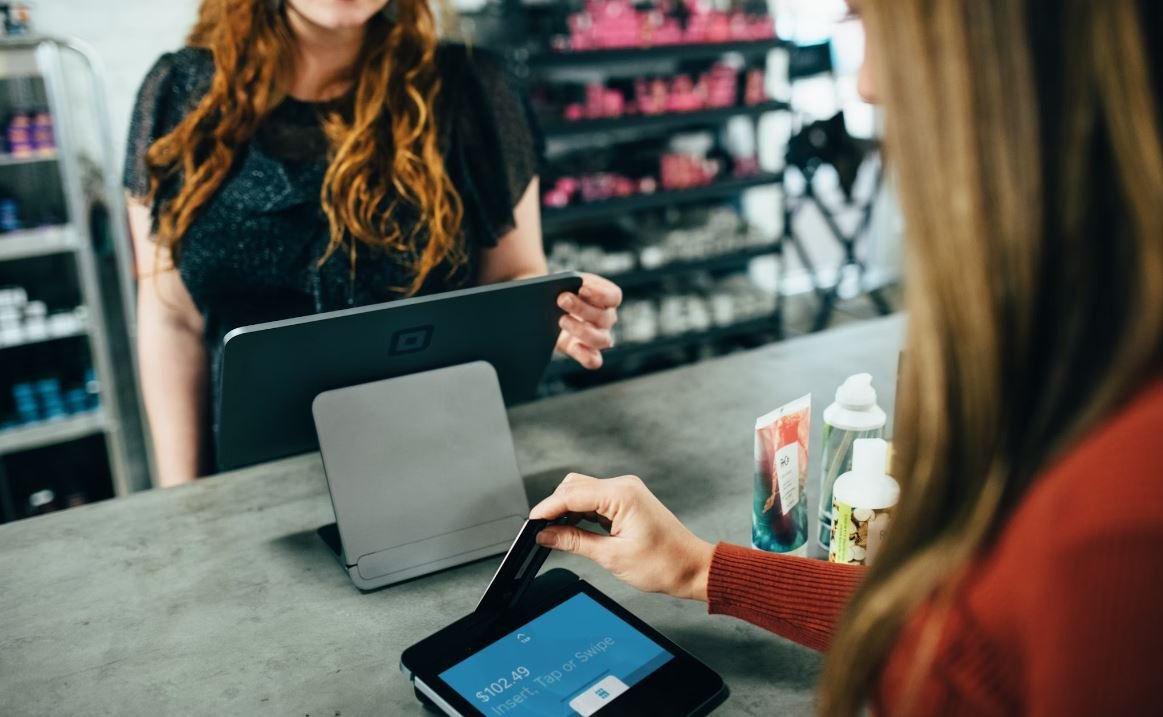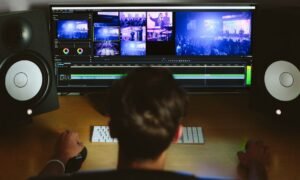What Is Footage in CCTV
In closed-circuit television (CCTV) systems, footage refers to recorded visual and audio data captured by surveillance cameras. It is an essential component of CCTV systems as it allows for the review, analysis, and investigation of incidents.
Key Takeaways:
- Footage is recorded visual and audio data captured by surveillance cameras in CCTV systems.
- It is used for review, analysis, and investigation of incidents.
- High-quality images are crucial for effective footage.
- Footage storage duration depends on storage capacity and organizational needs.
- Access control measures are important to protect sensitive footage.
In the context of CCTV, the term footage pertains to the continuous recording of events as observed by surveillance cameras. The resulting footage can be stored and accessed later for various purposes.
Quality and Resolution
The effectiveness of CCTV footage largely depends on the quality and resolution of the captured images. High-quality footage provides clear and detailed visuals, which are vital for identification and analysis purposes. Modern CCTV systems typically utilize high-definition (HD) cameras capable of capturing images with a resolution of 1080p or higher, ensuring crisp and sharp footage.
Storage Duration and Capacity
The storage duration of CCTV footage varies depending on factors such as storage capacity and organizational needs. Larger storage capacity allows for longer retention periods, ensuring that historical footage is available when needed. Different organizations may have varying legal requirements or internal policies dictating the minimum duration for retaining footage. Storage systems typically employ a cycle that overwrites old footage with new recordings once the storage capacity is reached.
| Storage Capacity | Approximate Retention Period |
|---|---|
| 1TB | 7-15 days |
| 2TB | 15-30 days |
| 4TB | 30-60 days |
Access Control and Security
Protecting sensitive CCTV footage is of utmost importance to prevent unauthorized access and maintain privacy. Utilizing access control measures such as passwords, encryption, and multi-factor authentication ensures only authorized personnel can view or retrieve footage. Additionally, physical security measures, including locked storage facilities or restricted access to control rooms, add an extra layer of protection for valuable footage.
| Access Control Measures | Importance |
|---|---|
| Passwords | Primary level of protection |
| Encryption | Secures footage during transmission and storage |
| Multi-factor authentication | Enhanced security against unauthorized access |
Backup and Redundancy
Creating backups of CCTV footage is critical to ensure the prevention of data loss due to hardware failure, theft, or other unforeseen events. Redundancy mechanisms, such as storing copies of footage in remote locations or utilizing cloud storage solutions, can provide enhanced protection and accessibility.
- Perform regular backups to protect against data loss.
- Implement redundancy measures for added security.
- Utilize off-site storage or cloud solutions for remote access to footage.
Understanding the concept of footage in CCTV systems is essential for anyone involved in security and surveillance. By capturing events and activities, footage allows for retrospective analysis, evidence gathering, and maintaining a secure environment.

Common Misconceptions
Misconception #1: Footage in CCTV refers only to videos
One common misconception people have about CCTV footage is that it only consists of videos. In reality, footage in CCTV can include both videos and images. CCTV systems can capture still images, such as photographs, in addition to recording video footage. These images can be just as valuable in investigations as videos, providing crucial visual evidence.
- CCTV footage can include both videos and images
- Still images captured by CCTV cameras are valuable in investigations
- Visual evidence from CCTV footage can be crucial in solving crimes
Misconception #2: Footage in CCTV is always clear and high quality
Another misconception is that footage in CCTV is always clear and high quality. While modern CCTV systems can provide high-resolution imagery, the quality of the footage can vary depending on various factors such as lighting conditions, camera placement, and camera specifications. In some cases, footage may be blurry, have low resolution, or be affected by other issues that can impact its clarity.
- The quality of footage in CCTV can vary
- Factors such as lighting and camera placement can affect the clarity of footage
- CCTV footage may sometimes be blurry or of low resolution
Misconception #3: All CCTV footage is stored indefinitely
Many people believe that all CCTV footage is stored indefinitely, which is not true. While some organizations may choose to store footage for long periods, others may have limited storage capacity and policies in place for retaining footage. The duration of storage can vary depending on factors such as the type of establishment, legal requirements, and storage capabilities. It is important to note that not all CCTV footage is kept indefinitely.
- CCTV footage storage duration can vary
- Some organizations have limited storage capacity
- Retention policies and legal requirements determine the duration of storage
Misconception #4: CCTV footage is always accessible to the public
Contrary to popular belief, CCTV footage is not always accessible to the public. The ownership and control of footage often lie with the entity or individual who installed the CCTV system. Access to the footage is usually restricted to authorized personnel such as law enforcement, security personnel, or individuals with legal rights to the footage. Depending on the jurisdiction and privacy laws, certain conditions and permissions might need to be met before accessing CCTV footage.
- Access to CCTV footage is often restricted
- Ownership and control of CCTV footage lie with the entity or individual who installed the system
- Legal rights and permissions are often necessary to access CCTV footage
Misconception #5: CCTV footage is always recorded in real-time
Lastly, it is a misconception that CCTV footage is always recorded in real-time. While many CCTV systems do offer real-time monitoring capabilities, not all footage is constantly recorded and streamed in real-time. CCTV systems often use motion detection or scheduled recording to optimize storage space and focus on capturing events or activities of interest. Some CCTV systems may only record upon detecting motion or at specific times, while others may use a combination of real-time and event-triggered recording.
- Not all CCTV footage is recorded and streamed in real-time
- CCTV systems may use motion detection or scheduled recording
- Different recording methods are used to optimize storage space and focus on relevant events

What Is Footage in CCTV?
The use of closed-circuit television (CCTV) systems for surveillance and security purposes is becoming increasingly prevalent in various environments. One common term associated with CCTV is “footage.” Footage refers to the recorded images and videos captured by CCTV cameras. The following tables provide intriguing insights and statistics surrounding footage in CCTV systems.
Global CCTV Market Revenue by Year
| Year | Revenue (in billions) |
|---|---|
| 2015 | $17.54 |
| 2016 | $19.5 |
| 2017 | $21.92 |
| 2018 | $24.75 |
| 2019 | $27.68 |
The global CCTV market has witnessed steady growth over the years, with revenues increasing annually. The table demonstrates the consistent rise in revenue from 2015 to 2019, reflecting the growing demand for CCTV systems worldwide.
Estimated Daily Footage Captured by CCTV Worldwide
| Country | Estimated Daily Footage (in terabytes) |
|---|---|
| United States | 1,500 |
| China | 3,000 |
| United Kingdom | 500 |
| Japan | 700 |
| Germany | 400 |
Daily footage captured by CCTV systems worldwide is jaw-dropping. This table showcases the massive volume of data generated by CCTV systems on a daily basis in different countries, highlighting the vast scale of surveillance.
Common Types of CCTV Cameras
| Type | Description |
|---|---|
| Dome Camera | A compact camera housed within a dome-shaped casing, suitable for indoor installation. |
| Bullet Camera | A cylindrical-shaped camera often used for outdoor surveillance due to its weatherproof design. |
| PTZ Camera | A camera with the ability to pan, tilt, and zoom remotely, providing enhanced monitoring capabilities. |
| Fisheye Camera | A camera with a wide-angle lens that can capture a 360-degree view, eliminating blind spots. |
| Box Camera | A camera enclosed in a rectangular box, commonly used in areas requiring specific lenses or environmental protection. |
CCTV cameras come in various types, each tailor-made for specific monitoring requirements. This table outlines some common camera types, their brief descriptions, and their typical use cases.
Percentage of Crimes Solved with CCTV Footage
| Country | Percentage of Crimes Solved |
|---|---|
| United Kingdom | 72% |
| Japan | 68% |
| United States | 59% |
| Australia | 45% |
| Canada | 38% |
Footage obtained from CCTV systems has proven instrumental in solving crimes. This table demonstrates the varying success rates in different countries, highlighting the importance of CCTV footage in law enforcement and criminal investigations.
Global Storage Capacity for CCTV Footage
| Year | Estimated Storage Capacity (in petabytes) |
|---|---|
| 2015 | 7 |
| 2016 | 12 |
| 2017 | 21 |
| 2018 | 35 |
| 2019 | 52 |
The need for substantial storage capacity for CCTV footage has grown alongside the increased demand for surveillance. This table highlights the remarkable growth in global storage capacity from 2015 to 2019, accommodating the vast amount of video data captured daily.
Top 5 Cities with the Highest Number of CCTV Cameras
| City | Number of CCTV Cameras |
|---|---|
| Beijing, China | 1,000,000 |
| London, United Kingdom | 627,707 |
| Shanghai, China | 500,000 |
| Moscow, Russia | 237,000 |
| Tokyo, Japan | 202,198 |
These cities hold the leading positions when it comes to massive CCTV surveillance networks. The table showcases the top five cities worldwide with the highest number of CCTV cameras, emphasizing their commitment to security and public safety.
Percentage of Businesses Using CCTV Surveillance
| Industry | Percentage of Businesses |
|---|---|
| Hospitality | 92% |
| Retail | 84% |
| Banking | 75% |
| Manufacturing | 68% |
| Healthcare | 54% |
CCTV surveillance is a prevalent practice in numerous industries to ensure safety and prevent losses. This table displays the proportions of businesses in various sectors that utilize CCTV systems, illustrating their widespread adoption across different sectors.
Average Video Retention Period for CCTV Footage
| Country | Average Retention Period (in days) |
|---|---|
| United States | 30 |
| United Kingdom | 14 |
| Germany | 45 |
| Australia | 7 |
| Japan | 90 |
The retention period of CCTV footage varies across different countries. This table showcases the average duration for which recorded footage is typically retained, balancing the need for evidence preservation and storage constraints.
Amount Spent on CCTV Systems in the United States
| Year | Amount Spent (in billions) |
|---|---|
| 2016 | $4.15 |
| 2017 | $4.58 |
| 2018 | $4.92 |
| 2019 | $5.21 |
| 2020 | $5.89 |
CCTV systems have become a significant investment in the United States to enhance security measures. This table presents the expenditures made on CCTV systems over several years, highlighting the consistent growth in funding for such technologies.
Conclusion
In this digital age, CCTV footage has become a valuable tool for surveillance, crime prevention, and investigations. The tables provided demonstrate the expanding market, vast volumes of daily footage, various camera types, crime-solving potential, storage requirements, and regional trends. With the increasing adoption of CCTV systems across sectors and countries, footage remains pivotal in ensuring the safety and security of people and property.
What Is Footage in CCTV?
FAQ
What is CCTV footage?
How is CCTV footage captured?
What is the purpose of CCTV footage?
What can CCTV footage be used for?
How long can CCTV footage be stored?
How is CCTV footage accessed?
Can CCTV footage be shared with others?
Is CCTV footage admissible in court?
How is CCTV footage protected from tampering or deletion?
Can CCTV footage be used for facial recognition?




